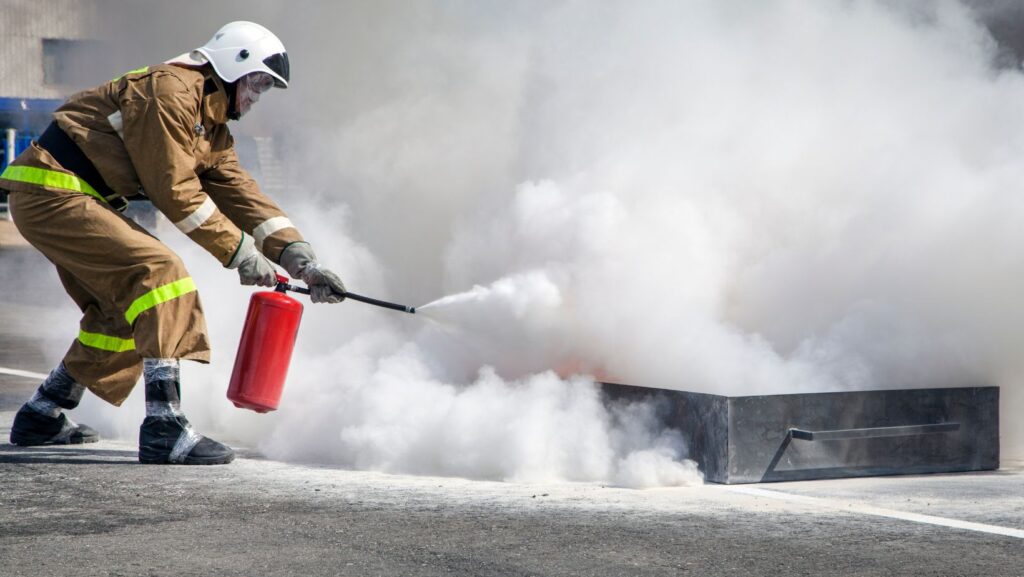Fire extinguishers are essential tools in fire safety. They are used to combat the early stages of fire, preventing it from spreading, damaging properties, and endangering lives. However, there are different types of fire extinguishers for different fire types; only by using them correctly would you be able to extinguish a fire before it becomes uncontrollable. A good idea would be to undergo fire warden training so you can make informed decisions about what fire extinguisher to use for specific fire emergencies.
In this article, we’ll be sharing with you the different types of fire extinguishers and how they can affect your health and safety.
Types of Fire and Fire Extinguishers
Fire extinguishers are designed differently to combat different fire types. So, here are the fire types you might have to deal with and the extinguishers that work best to put them out.
Class A
These are extinguishers used for fires caused by ordinary combustible materials such as cloth, wood, and paper. Class A extinguishers are used for materials that leave ash behind. These extinguishers usually contain water or water-based solutions specially made to displace oxygen and reduce the temperature until the fire dies down. Sometimes, additional additives such as wetting agents or foams are used to boost the extinguishing properties of these fire extinguishers.
Class B
Class B fire extinguishers are used to combat fire caused by ignition in flammable and combustible liquids. This includes oils, tars, petroleum, lacquers, and solvents. These fire extinguishers are known as the foam-forming type. Instead of water, they discharge foam that smothers the fire by securing the liquid and creating a barrier, which cuts out the oxygen supply that may cause reignition.
The Class B fire extinguisher can also be used for class A fire type.
Class C
These extinguishers are used to put out fires caused by electrical equipment such as home and kitchen appliances, computers, or transformers. Class C extinguishers contain carbon dioxide or dry chemical powders.

Class C extinguishers don’t leave any residue once the fire is out. The goal is to ensure that delicate parts of the equipment are still protected. They can only be used in indoor areas or confined spaces where air currents are weak, as stronger air currents can cause them to dissipate rapidly.
Class D
Class D fire types are caused by combustible metal. Fire extinguishers used to combat this fire type are made out of dry powders. The dry powder content absorbs the heat and puts out the flame. Some common combustible metals that can cause this fire include titanium, lithium, potassium, magnesium, and sodium.
You will mostly find Class D extinguishers in industrial environments. This fire type can also get out of control pretty quickly, so protective gear is required before approaching the fire source.
Class K
Class K fire types are common kitchen fires. They are caused by cooking oils and greases. The extinguishing agents used to put out this fire are wet chemicals.
The wet chemical is sprayed out as a fine mist that forms a soapy layer over the surface, which immediately cuts off oxygen supply.
Health and Safety Impacts of The Different Fire Extinguisher Types
The extnguishing content of most fire extinguishers can pose a risk to its users. Here are some potential impacts these extinguishers could have on individuals:
Respiratory Issues
Many Class B fire extinguishers contain fluorine-containing foam extinguishing agents. When used in a confined space for a long period, it can irritate the lungs and cause respiratory issues. Other fire extinguishers also pose this same risk if individuals use them in spaces that are not well ventilated.
Skin and Eye Irritation
Class A, B, and C extinguishers usually contain monoammonium phosphate that can irritate the eye and skin.

However, with the right protective equipment and knowledge, this can be avoided.
Conclusion
Using the wrong fire extinguisher can further escalate the situation. Knowing what fire extinguisher to use is important when trying to smother a fire outbreak.
